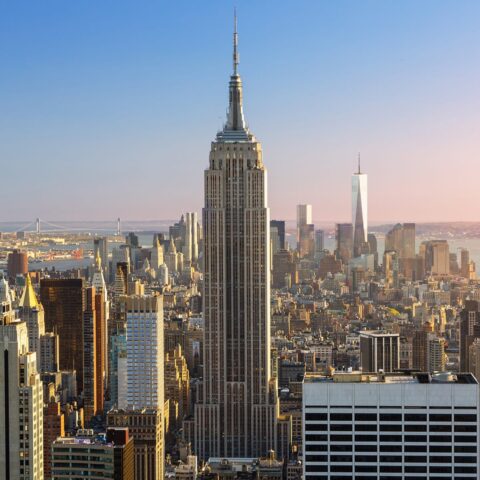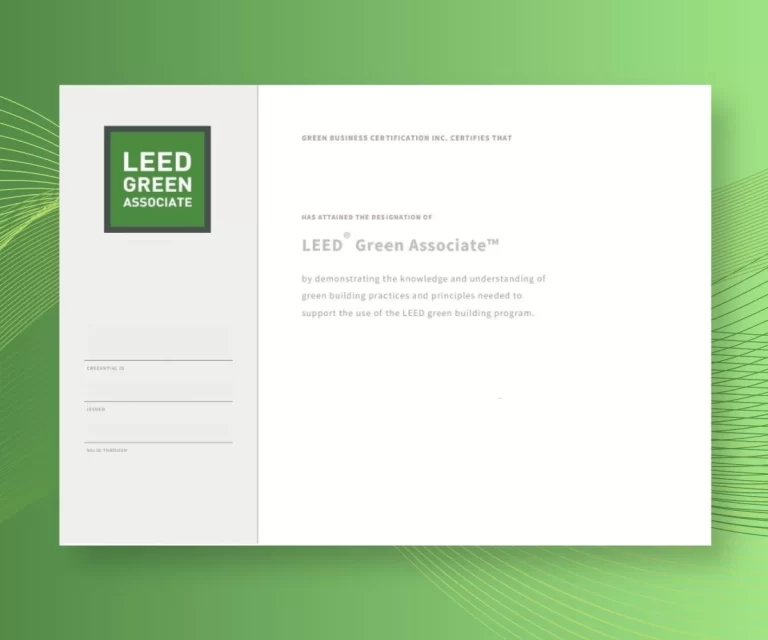
A LEED building may still be unfamiliar to most. For years, sustainability has often been perceived as something consciously good to achieve, yet still viewed as a daunting task. Too often, many businesses and companies view it to be too costly and challenging to implement. However, most recently, the conception of sustainability has been changing. As the stakes continue to rise, environmental responsibility can no longer be ignored; hence, the development and evolution of building LEED certification and its concept can lead the world to a greener future.
What is a LEED Building?
LEED (Leadership in Energy and Environmental Design) is one of the most well-known sustainable green building rating systems sponsored by USGBC (U.S. Green Building Council). Applicable and open to any building type, LEED presents a system that constructs highly efficient, economic, and healthy green buildings. Developed in 1994, LEED was intended to drive those in building, construction, and design in pursuit of environmental and sustainable practices in the industry. It is a third-party green building certification program that verifies a project designed and built with strategies and components in maximizing sustainability.
A LEED Certified Building refers to buildings that have been designed, built, and maintained using sustainable green building practices. LEED-certified buildings are designed and constructed with great emphasis on energy savings, water efficiency, enhanced indoor air quality, and reduced carbon emissions. In addition, the project’s overall stewardship of resources and awareness of its impact on the environment are taken into account.
Why LEED: The Pursuit to Sustainable Construction and Design
Sustainable practices are not just ecologically responsible, it implies good and economical business. As more and more consumers become socially and environmentally aware, the desire to purchase and collaborate with green-conscious organizations is constantly on the rise; hence, implementing sustainable practices and developing buildings with leed certification meets customer demand.
It should be noted though that when it comes to sustainability in terms of buildings, in particular, the application of green principles may cost more at the outset, but will result to lower operating costs in the long term. With green practices, LEED buildings also result in better indoor environmental quality, leading to happier, healthier, and more productive employees.
The Importance of Building LEED Certification
The principal reason for striving for a building to get LEED certified is to demonstrate the earnest intention in practicing sustainable design and construction. It is easy to claim that a building is green, but a third-party rating, especially one with a tremendous reputation, indicates to many in the industry that the building has successfully achieved a high standard. Any business would appreciate that a LEED building would provide a healthier environment for its employees whilst also featuring energy and water efficiency features that would result in lower bills.
Gaining LEED certification would also grant a competitive edge in the market. LEED assists investors in meeting their ESG (Environmental, Social, and Governance) goals by providing a globally recognized green building framework for measuring and managing their real estate performance.
Earning professional credentials is a way of advancing your specialty knowledge amongst those around you, including potential employers. USGBC recognizes that many industry professionals are inclined to prove their expertise and offers LEED credentials for that intention. One of the credentials being offered includes the LEED Green Associate title which indicates knowledge of green building principles at a competent level. LEED AP with specialty is an advanced credential that indicates expertise in green building and the LEED rating system.
Both titles require preparation for sitting an exam. At archiroots, any interested professional can be trained in gaining the LEED Green Associate title in 2 weeks. The exam preparation guide consists of helpful material that ensures not only success in the exam, but clarity on LEED and its green principles.
What are the Building LEED Certification Benefits?
There are numerous benefits to getting your building LEED-certified. There are economic, environmental, and health benefits associated with buildings with leed certification which will be elaborated on below.
Economic Benefits
Having a LEED building provides an edge in the competitive building industry. Experts in the market estimate that integrating sustainability results in market differentiation and improved financial performance.
A LEED building can also greatly attract tenants due to it being less expensive to maintain and having less waste production. LEED’s principles in saving energy and water results in reducing the building’s energy and water consumption, thus ending up with a cost-effective building.
Environmental Benefits
Buildings that are LEED-certified have features that help conserve energy and water and reduce carbon emissions and waste. According to a UC Berkeley study done in 2014, buildings with LEED’s standards had a 50% reduction in GHGs than the conventionally constructed buildings because of water consumption.
With LEED’s strong encouragement of sustainable or green material use, certified buildings are estimated to have specified more than $100 billion in green materials. Energy-efficient buildings also reduce pollution and benefit outdoor air quality in industrialized areas, potentially mitigating smog. Cities are now seizing the idea of green buildings becoming a mitigation strategy towards the effects of climate change, making air and the environment healthier for its inhabitants. Such strategies reduce the emission of toxic carbon emissions, ultimately helping the environment.
Health Benefits
Encouraging wellness is a high priority for employers, buildings, and city planners alike. LEED has an entire credit category dedicated to the quality and state of the indoor environment: Indoor Environmental Quality (EQ). Buildings that utilize LEED enable occupants to live, play, learn, and work in environments that optimize human health. With LEED’s standards highly emphasizing health and well-being, superior environments are created for building occupants that augment or enhance the indoor air quality and natural lighting, resulting in highly productive employees.
Enhancement of the indoor air quality can potentially reduce absenteeism and work hours inflicted by asthma, respiratory allergies, stress, and depression in buildings with leed certification.
With green technology gaining more interest from companies, LEED certification enables your building in becoming more attractive to tenants and organizations. It is also important for professionals who plan, design, or implement the LEED rating system in projects become LEED-certified. The first step in getting there is securing the LEED Green Associate title through proper guidance and training.
It is clear that sustainable construction and design is the way forward to a better and cleaner future. Not only is it a positive effect on the planet, but it is an exciting movement in innovation and business. As more designers, builders, and developers get involved, buildings with leed certification plays a significant role in maintaining high green building standards and paving the way to a greener and more sustainable future.

